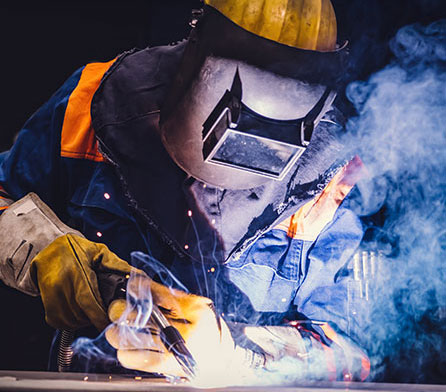ProStar™ Robotic Welding Cells Provide Flexibility in an Integrated, Pre-Engineered Workcell
Robotic welding has the potential to bring productivity gains to nearly any manufacturing operation – large or small, high or low volume. Companies invest in robotic welding systems to improve productivity, gain more consistent weld quality and reduce costs.
Robotic workcells provide automation solutions for many robot applications including arc welding, cutting, deburring, plasma welding, assembly and spot welding. When it comes to workcell integration, manufacturers have two options, either pre-engineered cells or custom cells.
Benefits of Pre-Engineered Robotic Welding Workcells

The main benefit of pre-engineered robotic welding workcells is the reduced delivery time compared to custom robotic solutions. Pre-engineered workcells have shorter lead times and require less setup, allowing users to get to work quickly. While there will be some time spent for programming, testing and installation, with pre-engineered cells, there is no need to start from scratch.
In addition to reduced upfront costs, pre-engineered robotic workcells offer cost savings over custom cells by reducing post- installation tweaks and adjustments that may go on for an extended period with custom built workcells.
Linde Offers Freedom of Choice
With a broad range of automation and welding process options, ProStar™ pre-engineered robotic cells are a recognized solution for production of repetitive parts of nearly any shape or size. Linde’s extensive line of welding cells supports a variety of OEM options, and customers can choose from among the major brands of six-axis robotic arms, controllers, positioners and consumables, including Panasonic, KUKA® and Fronius®.
Designed for Flexibility
With Linde’s robotic workcells, you can choose your preferred brand, welding process and configuration, including the following:

- Single or multi-axis positioners
- The option for one, two, or three workstation models
- Fixed or modular table configuration
- Easy-move forklift pockets




























